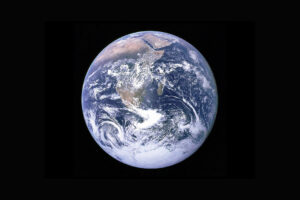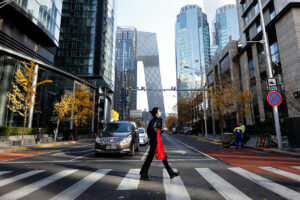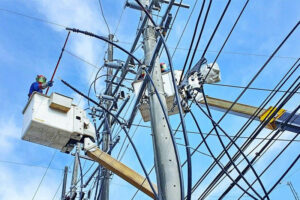A model for climate change response

On Aug. 5, Makati City Mayor Abby Binay declared a state of climate emergency in the city in response to the crisis brought about by climate change. “As temperatures and sea levels continue to rise, low-lying coastal areas in cities like Makati have become more vulnerable to strong typhoons that bring floods and landslides. This will result not only in the disruption of public services but also the displacement of families and even entire communities,” Binay said during a webinar organized by Makati Disaster Risk Reduction and Management Office (MDRRMO).
Legend has it that in one of his upriver expeditions after torrential rain, the Spanish conquistador Miguel Lopez de Legaspi stopped over in one of the barangays of Manila. When he came ashore, the tides were rushing up the river banks. Legaspi asked the barangay chief what the place is called. Not understanding Spanish, the chief pointed to the fast receding waters, saying “Makati na, kumakati na,” which means “The tide is ebbing.” Legaspi took the chief’s words as the answer to his question. So, he wrote down “Makati” as the name of the barangay.
My father taught me how to drive on the runways of the abandoned airport in Makati in 1955. The town was marshland then. Behind Makati Medical Center in 1969 were rice paddies. The Asian Institute of Management moved to its new campus on Paseo de Roxas, Makati in 1970. While a group of faculty members were having coffee in the Faculty Lounge, one professor said to us, “Look out the window, many years from now you will be talking about it.” The scenario was of the operator of the tractor answering the call of nature. What used to be rice paddies had been filled up and was being graded. That is now Legaspi Village.
I relate all this to point out to the generation born after 1980 that Makati is a low-lying area and prone to floods. CNN reported every day last week that Arctic and Greenland glaciers are melting four times faster than those in other parts of the world. Scientists project that if emissions continue to rise unchecked, the Arctic could be ice free in the summer as soon as the year 2040 as ocean and air temperatures continue to rise rapidly. The rise in the sea level could threaten low-lying cities like Makati with perennial floods.
Since the early 1900s, many glaciers around the world have been melting at a rapid pace. Carbon dioxide and other greenhouse gas emissions have raised temperatures higher in the poles, resulting in the rapid melting of glaciers. According to the data from the Philippine Atmospheric, Geophysical and Astronomical Services Administration (PAGASA), there has been a 0.75 degrees Celsius increase in the country’s annual temperature over the past 70 years and by 2050, the temperature increase is expected to reach as high as 1.8° Celsius.
Even if emissions are reduced significantly in the coming decades, scientists predict more than one third of the world’s remaining glaciers will melt before the year 2100. Melting glaciers raise sea levels, which in turn increases the rate of erosion of coastal communities and elevates storm surges as warm air and ocean temperatures create more frequent violent typhoons.
As glaciers melt and oceans become warmer, ocean currents will continue to alter weather patterns worldwide. Countries that consider fisheries a major industry will be affected as warmer waters will kill certain species of fish. The flood caused by the rise in sea level and the increased salinity of the flood waters call for raising crop yields significantly to offset the loss of agricultural land and to increase the income of farmers.
Violent typhoons and wide-scale floods will wreak tremendous damage on coastal towns, even on whole provinces, as they have done in recent years. Climate change has also caused changes in seasonal rainfall patterns and droughts, resulting in considerable losses to the farming sector.
Scientists consider it reasonable to assume that the sea level will rise by 30 to 40 centimeters in the next 50 years. That means not only a loss of land for farming and housing but the increased susceptibility to floods as already being experienced in many parts of Metro Manila and in many towns of the Central Plain provinces of Bulacan and Pampanga.
Climate change demands well-thought-out action plans such as preparing communities for impacts that are already being experienced now. It also means looking to the future, like reducing gas emissions. Last Saturday, the CNN anchor asked the scientist studying the situation in Greenland what his message is to the people in their homes. His curt message: “Clean the air.” It calls for the support and involvement of every sector of society, businessmen, professionals, academics, the youth, ordinary folks, and even Indigenous People.
Makati Mayor Binay’s programs and initiatives intended to mitigate greenhouse gas emissions in the city include the purchase of electric vehicles (e-vehicles) to be used by the city government, installation of solar panels in public schools and government offices to minimize energy consumption and to ensure continuity of services during calamities.
The program also strictly implements the Solid Waste Management Code, Makati Green Building Code, the plastic ban among households and business establishments, a ban on cigarette smoking, an Anti-Smoke Belching Ordinance, and the Greenhouse Gas Reduction Ordinance.
We bring our used plastic food packages and empty soft drinks bottles to a junk shop for recycling. My driver said, “Why don’t you save yourself the trouble by just throwing them away as many neighbors do.”
That brought to mind the time I was teaching in the Ateneo Graduate School of Business (AGSB). The International Labor Organization (the ILO) offered the school study grants on Environmental Management at the Centre d’Etudes Industrielles (CEI) in Geneva. The ILO specified that one of the grantees be a Marketing professor to reorient his thinking to environmental protection and preservation.
Marketing practitioners have the reputation of being spoilers of the environment. They are the ones who came up with the idea of plastic grocery bags and soft drinks bottles, throw-away styropor food packs, tetra packs, air fresheners, wet wipes, etc. Fr. Thomas Fitzpatrick, S.J., dean of the school, nominated me as I was then the chair of the marketing faculty. I was supposed to replicate the CEI program in Ateneo.
While in Geneva, I and the other attendees of the program were taken to a plant which converted solid waste into energy. The power generated was enough to light up half of Geneva at night. The residue from the process was something like asphalt.
Mayor Binay had announced previously that electric buses (e-buses) will soon be a part of the regular public transportation sector in the city following the signing of a Memorandum of Agreement between the city government and an international government organization on the establishment of a smart public transport system in the city. She said, “Apart from the Makati Subway, this new public transport system is in line with our efforts to transform Makati into a smart city. We need to upgrade our systems because smart transportation is more convenient, safe, and cost-effective for both the city and commuters than traditional frameworks.”
The city government will provide the land for the construction of the EV bus depot and parking area, oversee the implementation of the project, and secure a sufficient amount from its budget to cover the expenses required for the operation of the project, including the cost of proper storage, utilities for operation, and maintenance of ICT system and EV buses.
Laudable is Mayor Binay’s initiative. Many of the cities in Metro Manila — Navotas, Malabon, Manila, Pasay, Parañaque, and Las Piñas — lie on the shore of Manila Bay. The major port cities of Cebu, Iloilo, Cagayan de Oro, and Davao are vulnerable to the dangers of climate change, as are all the other coastal cities of the Philippines. Heads of these government units should emulate Abby Binay and imitate her initiatives.
In fact, Mayor Binay made this appeal: “We call upon everyone to come together and act now. We must ensure aggressive application of the whole-of-society approach in combating climate change. We heard the data. We understood the science, and we are feeling its impact. Now is a crucial time to act, and we need to act fast. We need thinkers, doers, and movers. The time for action is now. As the new breed of Makatizens and global citizens, it is our responsibility to take care of our city and ensure that it remains a liveable place for future generations. We must promote sustainability and climate consciousness in all our actions. We must be the change we want to see in our city and the world.”
That brings me back to the executive program on Environmental Management I was developing for Ateneo’s Graduate School of Business. After attending the program in Geneva, Fr. Fitzpatrick, Associate Director Lydia Echauz, a number of AGSB professors, CEI Environmental Management program director Michael Royston, and I went to a conference venue in Caliraya to develop the Ateneo version of the program.
Just as we had finalized the curriculum and I had written some teaching materials, Fr. Fitzpatrick asked to be assigned as a missionary, as was his original goal in joining the Jesuit order, in Africa. A lay person, an MBA from Stanford, replaced him. The new dean immediately scrapped the proposed course. He didn’t find it appropriate for graduate studies in Business.
Some heads of local government units very vulnerable to problems caused by climate change may not consider response to climate change challenges important. Philip Bowring, editor of the Far Eastern Economic Review, who has an across-the-board and objective view of the Philippine situation, points out in his book, The Making of the Modern Philippines, that many local government units are run by and for an elite of families and interests, provincial and central. To them, political interests come first before good governance.
Has the call of Mayor Abby Binay to come together to combat climate change fallen on many deaf ears?
Oscar P. Lagman, Jr. is a retired corporate executive, business consultant, and management professor. He has been a politicized citizen since his college days in the late 1950s.




